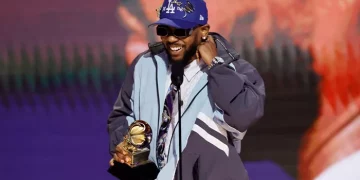Trap and Drill music are two influential subgenres of hip-hop that have grown in popularity worldwide. Each genre has a unique sound, culture, and impact on the music industry. In this article, we will explore their origins, key characteristics, notable artists, and their influence on modern music.
What Is Trap Music?
The Origin of Trap Music
Trap music originated in the Southern United States during the late 1990s and early 2000s. The genre’s name comes from the term “trap,” a slang word for a place where drugs are sold. Trap music reflects the struggles, hardships, and environment of those involved in street culture. Atlanta, Georgia, is often considered the birthplace of trap music, with artists like T.I., Gucci Mane, and Jeezy being pioneers of the genre.
Key Characteristics of Trap Music
Trap music has a distinct sound that sets it apart from other hip-hop subgenres. Some defining features include:
Heavy Basslines: Trap tracks often feature deep, booming bass that drives the rhythm.
Hi-Hats: Rapid, stuttering hi-hats create a syncopated and energetic feel.
808 Drums: The Roland TR-808 drum machine is a staple in trap production.
Dark Melodies: Trap beats often use eerie or melancholic melodies, adding a dramatic tone.
Lyrics: The lyrics often focus on street life, personal struggles, and resilience.
Notable Trap Artists
Several artists have defined and expanded the trap genre, including:
T.I.: Often referred to as the “King of Trap,” T.I. popularized the term with his album Trap Muzik in 2003.
Gucci Mane: Known for his prolific output and influence on the Atlanta trap scene.
Future: A key figure in modern trap music, blending auto-tuned vocals with melodic beats.
Migos: Known for their fast-paced flow and catchy hooks.
Trap’s Influence on Modern Music
Trap music has transcended hip-hop, influencing genres like pop, EDM, and even K-pop. Artists like Beyoncé, Ariana Grande, and Justin Bieber have incorporated trap elements into their music. The genre’s global appeal has also led to collaborations between trap artists and international musicians.
What Is Drill Music?
The Origin of Drill Music
Drill music emerged in Chicago in the early 2010s. The term “drill” refers to street slang for retaliation or attacks, reflecting the genre’s gritty and confrontational themes. Drill music is closely tied to the experiences of urban youth in Chicago, often highlighting violence, poverty, and survival. Chief Keef is widely regarded as one of the pioneers of drill music, gaining attention with hits like I Don’t Like and Love Sosa.
Key Characteristics of Drill Music
Drill music has a raw and aggressive sound. Some defining elements include:
Hard-Hitting Beats: Drill beats are slower and darker compared to trap, often featuring ominous instrumentals.
Minimalistic Production: The production often emphasizes simplicity, with a focus on rhythm and atmosphere.
Realistic Lyrics: Drill lyrics are direct and vivid, often describing real-life experiences in urban environments.
Unique Flows: Drill rappers use a laid-back, almost conversational flow that contrasts with the high-energy beats.
Notable Drill Artists
Drill music has produced several influential artists, including:
Chief Keef: The face of Chicago drill music, credited with bringing the genre to mainstream attention.
Lil Durk: Known for blending melodic elements with drill themes.
G Herbo: Another Chicago native who has contributed to the growth of the genre.
Pop Smoke: A pioneer of Brooklyn drill, blending the style with New York’s hip-hop culture.
Drill’s Global Expansion
Drill music has expanded beyond Chicago, influencing artists in the UK, Australia, and other parts of the world. UK drill, in particular, has become a global phenomenon, with artists like Skepta, Headie One, and Digga D shaping the sound. UK drill often features faster tempos and incorporates British slang and cultural references.
Trap Vs. Drill: Key Differences
While trap and drill music share similarities, such as their roots in street culture and focus on gritty themes, they differ in several ways:
Tempo: Trap is often faster-paced, while drill has a slower, more menacing tempo.
Production Style: Trap features polished, high-energy beats, whereas drill emphasizes minimalism and darkness.
Themes: Both genres highlight struggles, but drill often delves deeper into violence and retaliation.
Regional Influence: Trap is rooted in the Southern U.S., while drill originated in Chicago and later expanded globally.
The Cultural Impact of Trap And Drill
Both trap and drill music have significantly impacted not just the music industry but also fashion, language, and lifestyle. Trap artists often popularize luxury brands and streetwear, while drill artists influence trends in urban fashion. Additionally, both genres have sparked debates about their lyrical content and its impact on youth culture.
Criticism And Controversy
Trap and drill music have faced criticism for glorifying violence, drug use, and materialism. However, many artists argue that their music reflects their realities and serves as a form of expression. The controversy has not hindered their growth but has fueled discussions about representation and responsibility in art.
Conclusion
Trap and drill music are powerful genres that continue to shape the musical landscape. Trap music’s energetic beats and anthemic hooks have made it a global phenomenon, while drill music’s raw storytelling and authenticity resonate with listeners worldwide. Both genres have proven their staying power, influencing a new generation of artists and fans.
Related topics:



























